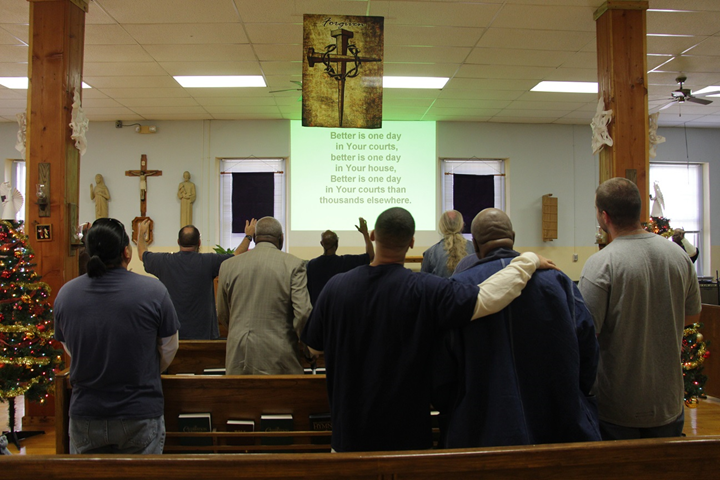
THE PCA MODEL
The PCA Model is unique in its design because:
Different from the traditional prison ministry wherein volunteers from churches in the free world come into facilities to conduct worship with the residents, this is an actual “church plant” or “new mission start” within the prison. Just as we see church congregations birthed and developed within communities on the outside, so it is with prison congregations. In this case, the most significant difference is that the mission takes place in partnership with the Department of Corrections, operating in harmony with the safety guidelines and security restrictions of each individual correctional facility, and in conjunction with the rules and regulations within that particular jurisdiction/state in the country.
There is both continuity and stability in the establishment of this prison congregation with an organized denomination that supports the mission and calls the pastor, preferably full time if possible, to lead the congregation in accordance with Department of Corrections protocol.
Because the congregants of a prison congregation are indigent, the new church plant will never be self-sustaining and requires outside assistance to fund itself. This is one of the most beautiful characteristics of PCA’s Model because of the often unexpected by-products of the design.
Ideally, the prison congregation pastor develops relationships with several outside churches that form an ecumenical network of support for the “inside church.” This support comes in the form of both financial and human resources. As with a church on the outside, the pastor cannot serve the congregants in the fullness of love and grace without help from others. The prison congregation pastor depends on the assistance of volunteers, some that will come inside the prison and others who won’t, to carry out worship services and other activities with and for the congregation. These volunteers are most often generated through the pastor’s relationship with the support network of churches on the outside.
Many of these volunteers could never have imagined themselves going into prison. To their knowledge, they’ve never even seen a felon! But they take the courageous step to accept the commission of our Lord to remember and to visit those in prison, unsure of how it will work out. What we see again and again and again is the extraordinary blessing of how these volunteers are forever changed by the experience of engaging in faithful practices with incarcerated men and women, serving alongside them, and loving them in Christ. Their contributions to the healing and restoration of souls behind the prison walls and razor wire are incalculable. Yet these volunteers will tell you THEY are the ones who are blessed beyond measure by the ones society has deemed, “the least of these.”
Another powerful aspect of the PCA Model is the continuum of pastoral care and welcoming communities of faith available to the congregates upon their release from prison back into freedom. Reintegration is an arduous process that, even with every advantage and imaginable resource, is daunting to the men and women coming out. Opportunities abound for the seed of faith that was planted and nurtured within the limits of the prison environment to be unearthed and stolen upon exposure to the trials and temptations of returning to life outside.
Our belief is that as followers of Christ we, the Church, have a responsibility to create a hedge of protection around those seeds of faith by utilizing the network of supportive communities of faith on the outside to readily, upon being rightly equipped, receive the men and women congregates coming out of incarceration. Specifically, to be proactive in offering them a demonstratively welcoming and affirming place to worship, to continue to spiritually develop, to become integral and active participants in the life of the community, and to connect to other helpful resources as they traverse their re-entry into society.


